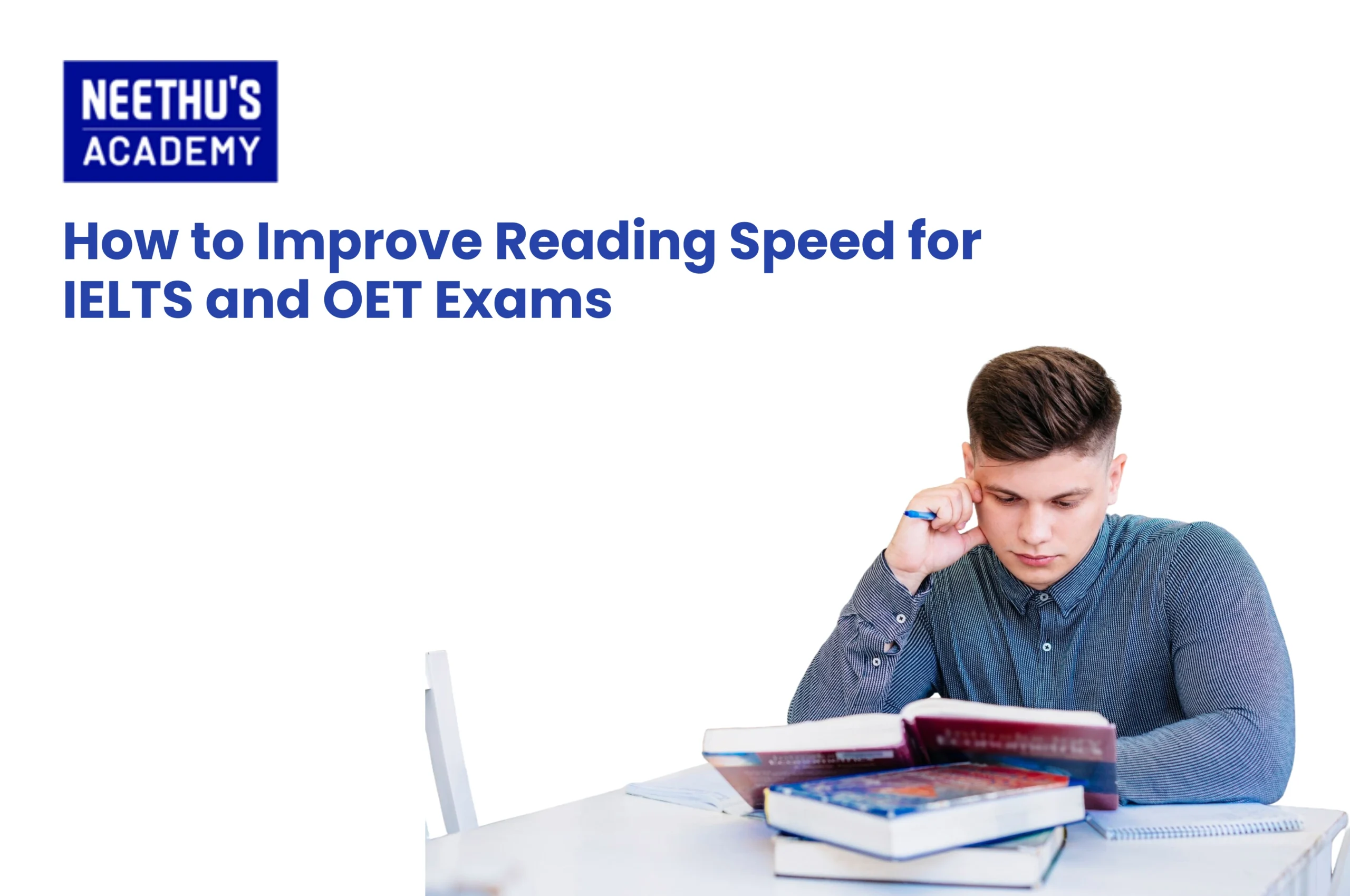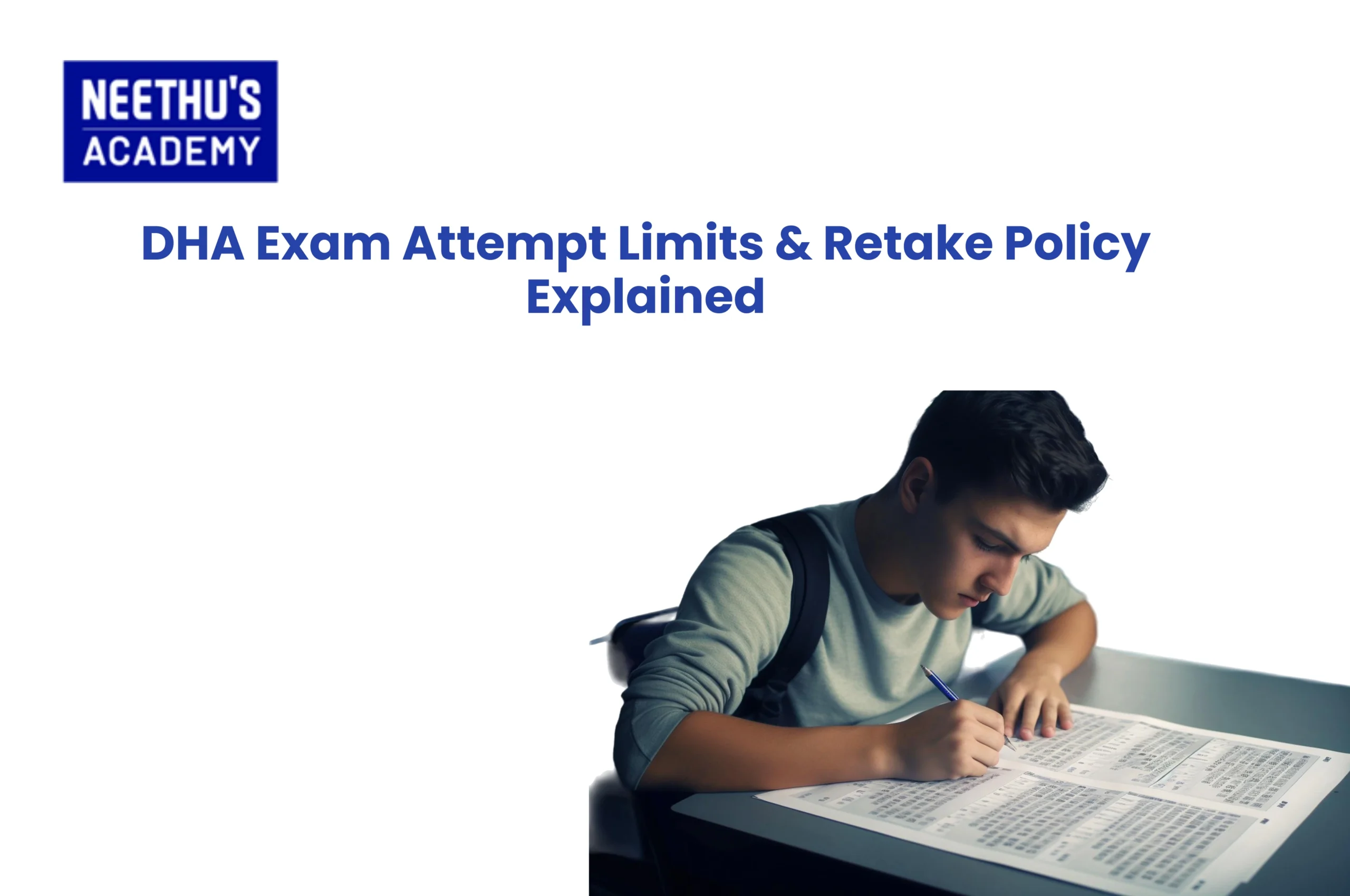Proving one's ability in the English language is a prerequisite for employment, education, or immigration to English-speaking countries in the globalized world.…

How to Improve Reading Speed for IELTS and OET Exams
For competitive English tests, such as the IELTS and OET, reading speed is a key factor in achieving an excellent score. Both exams are timed, challenging you not only to understand but also to find, read, and answer quickly under pressure. The IELTS Reading test allows you 60 minutes to answer 40 questions, but the OET Reading Part C requires rapid comprehension of lengthy healthcare-related texts. If you take too long over one question, you could miss others—making reading speed and strategy critical to success.
Boosting your reading speed for IELTS or OET is not about speeding up—about reading wisely. With proper techniques and regular practice, you can improve understanding at the cost of reducing time per passage.
Scanning vs. Skimming
Two of the most essential skills in IELTS and OET reading practice are skimming and scanning, but they are used with different intentions.
- Skimming means quickly going through the passage to get the main idea or gist. You’re not looking for details here; instead, focus on understanding the overall theme, structure, and tone. This is especially useful before answering general or main idea questions.
- Scanning, however, is all about finding particular information or keywords. For example, in OET Reading Part B or IELTS Academic passages, scanning enables you to identify dates, figures, or names without reading the entire line.
Being able to know when to skim and when to scan is a significant aspect of OET reading speed tips. Efficient readers switch between both—skimming to get a context, then scanning for accuracy.
Daily Reading Exercises
Consistency is the key to developing speed. The following are some daily exercises to train your eyes and brain for quicker reading:
Timed Reading Practice:
Select a short article (approximately 300–500 words). Set a timer for 2–3 minutes and read as quickly as possible while still comprehending. Measure the number of words you read each minute. Gradually try to increase your speed without compromising accuracy.
Practice Passages for IELTS and OET:
Make a habit of practicing reading comprehension for IELTS and OET question papers. Knowing the tone, vocabulary, and design of the exam lessens apprehension at the time of actual examination.
Summarizing Practice:
After reading any news article, condense it into two sentences. This enhances concentration, understanding, and retention.
Newspaper Scanning Drill:
Select a news article and attempt to find five specific pieces of information (such as names, numbers, or places) in 60 seconds. This simulates the scanning ability under time-limited exams.
Eye Pacing Practice:
Read with your finger or pen leading the way at a constant pace. This conditions your eyes to keep moving and avoid backtracking—the most frequent cause of slow reading.
Performing these exercises for only 15–20 minutes a day can significantly enhance your speed and confidence in weeks.
Vocabulary Building Techniques
Having a limited vocabulary can slow you down as you come to a halt to decipher unknown words. To enhance OET and IELTS reading speed, vocabulary growth needs to become a daily routine.
Read Topic-Based Material:
For IELTS, read education, environment, and technology materials. For OET, read healthcare journals, hospital reports, and medical blogs.
Use Flashcards or Apps:
Make flashcards of new words and study them through apps such as Anki or Quizlet. Repetition makes recalling stronger.
Learn in Context:
Instead of memorizing words in isolation, learn words in phrases. For instance, “adverse reaction” or “patient adherence” in OET context.
Keep a Vocabulary Journal:
Use new words with definitions and example sentences. Check every week.
Guess Meaning from Context:
While reading, attempt to guess the word meaning prior to consulting the dictionary. Such a skill proves to be time-saving during actual exams.
A solid vocabulary enables you to read quicker, pick up tone, and prevent rereading sentences—a crucial step in learning OET reading speed tips.
Eye Movement and Focus Techniques
Most readers read word-for-word, which makes them slow. Fluent readers’ eyes move in chunks—picking up 3–5 words at a time. Below are strategies to practice your eyes:
Chunk Reading:
Practice your eyes to take in groups of words instead of one word. For instance, read “in the healthcare system” as one instead of four individual words.
Avoid Subvocalization:
This is the tendency of “saying words in your head.” Make a conscious attempt to substitute it with quiet understanding—concentrate on eye recognition of word patterns.
Peripheral Vision Expansion:
Practice reading the center of every line while still sensing the edges. This expands your vision range, aiding you in reading more quickly with fewer eye pauses.
Use Online Speed Reading Tools:
Tools such as Spreeder or ReadSpeeder can also condition your eyes to travel faster over text.
Sit Up Straight and Concentrate:
Sit up straight with the book at eye level and minimize distractions. Physical comfort affects concentration immediately.
When you use these techniques together, your eye agility and mental focus combine to eliminate hesitation and rereading—giving you a measurable speed gain.
Common Reading Timing Mistakes
Even the well-prepared candidates lose marks because of poor time management. Following are the most frequent timing errors in IELTS and OET reading tests:
Reading Each Word:
You don’t have enough time to read everything in detail. Practice discovering which parts are most important.
Staying Too Long on Tough Questions:
Don’t spend time trying to decipher one confusing paragraph. Skip and come back later.
Not Paying Attention to Keywords in Questions:
Missing a keyword usually makes you search blindly in the passage. Always highlight or underline them first
No Initial Skimming:
Skipping the initial skimming while starting to answer can make you lose context, particularly in IELTS Academic passages.
Not Tracking Time per Section:
Allocate your time sensibly—approximately 20 minutes per passage for IELTS and corresponding time for OET Parts A, B, and C.
Steering clear of these traps keeps you on course and allows you to optimize your score potential.
Conclusion
Boosting your reading speed for IELTS or OET is a process that develops over time, based on sustained practice, concentration, and intelligent methods. Don’t mistake speed for haste—efficient readers strike a balance between speed and understanding. With daily practice, effective skimming and scanning, expanding vocabulary, and excellent eye coordination, you can efficiently complete each reading section within time.
Keep in mind, reading efficiency is not talent—it’s a skill you train. Begin small, be persistent, and within a few weeks, you’ll find yourself reading quicker, comprehending better, and scoring better in both IELTS and OET reading sections.
Frequently Asked Questions
Practice timed, skimming and scanning exercises, and don’t read every word.
OET reading is more specialized with health subjects, and IELTS is general and academic.
You must skim initially for context purposes, and then you may scan in order to find specific details quickly.
Take around 1–1.5 minutes per question in IELTS and use time proportionally in each part of OET reading.
Related Blogs
- All Posts
- OET
- IELTS
It is absolutely possible to increase your score in IELTS speaking within one month if you are motivated, really well prepared, and…
The reading module of the IELTS exam tests your comprehension skills on a variety of question types in a short period. Among…
Course Enquiry
Latest Posts
- All Posts
- canada
- CBT
- DELF
- DHA
- French
- GENERAL
- German
- Haad
- IELTS
- IQN NEW ZEALAND
- MOH
- NCLEX-RN
- NHRA
- OET
- OSCE
- Pearson Vue
- PROMETRIC
- PTE
- TOEFL
- Back
- NCLEX - NGN
- Back
- OET FOR PHYSIOTHERAPIST
- OET FOR PHARMACIST
- OET FOR DOCTORS



